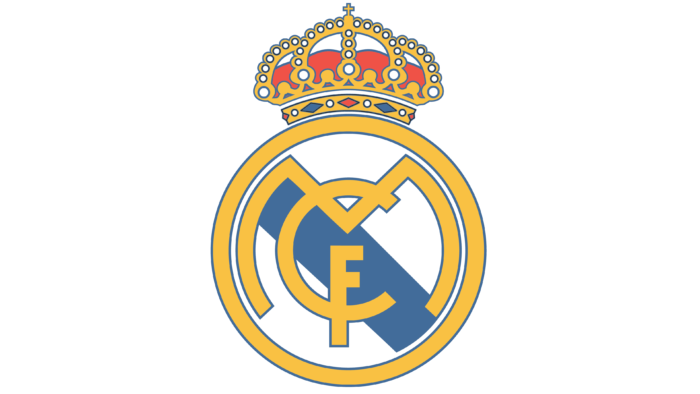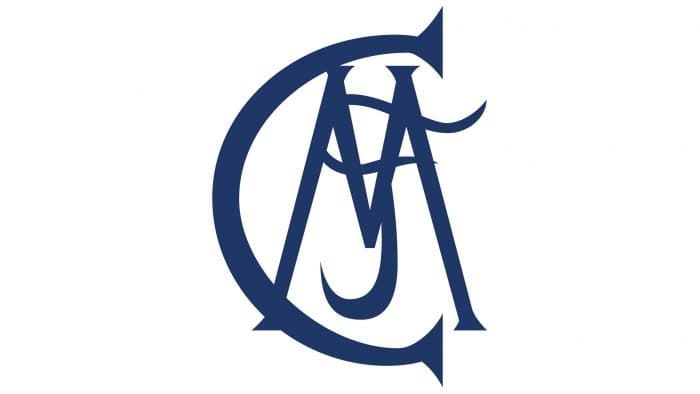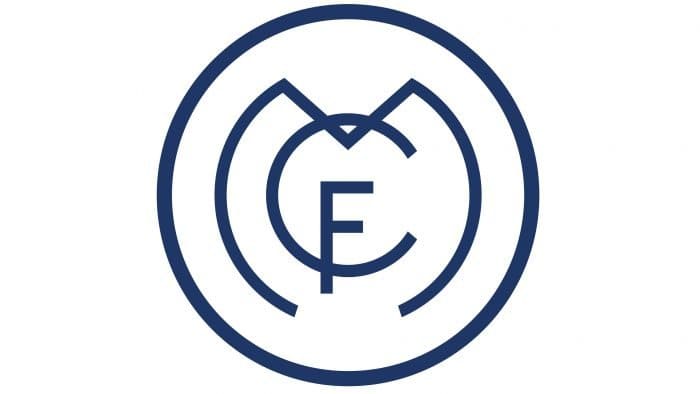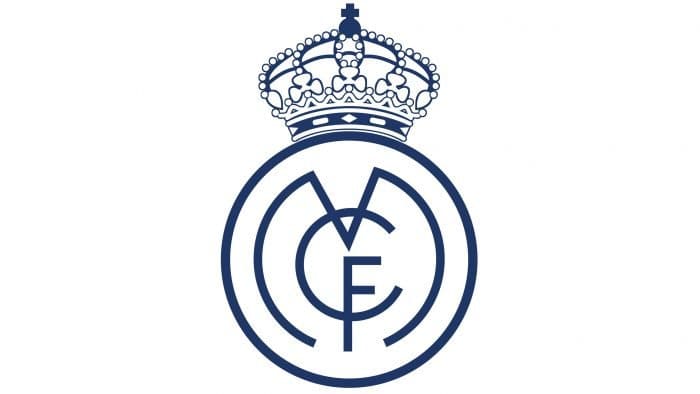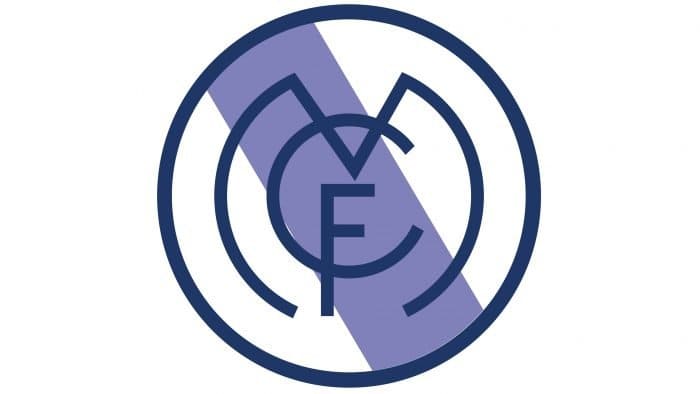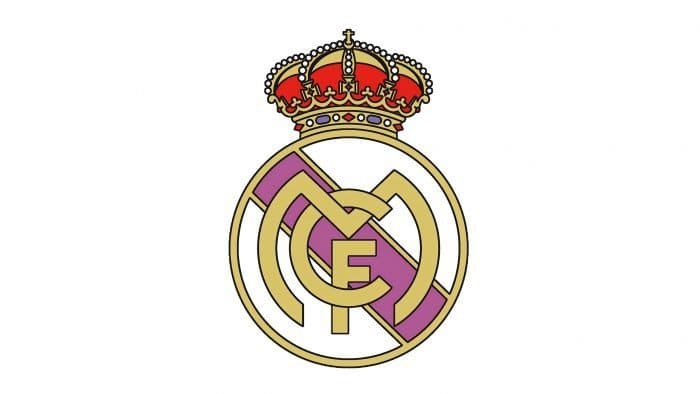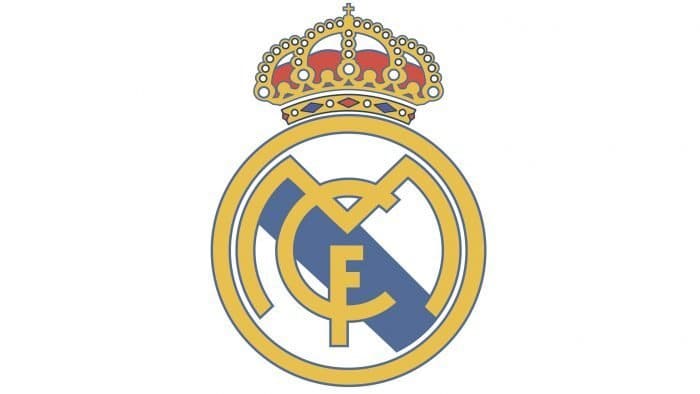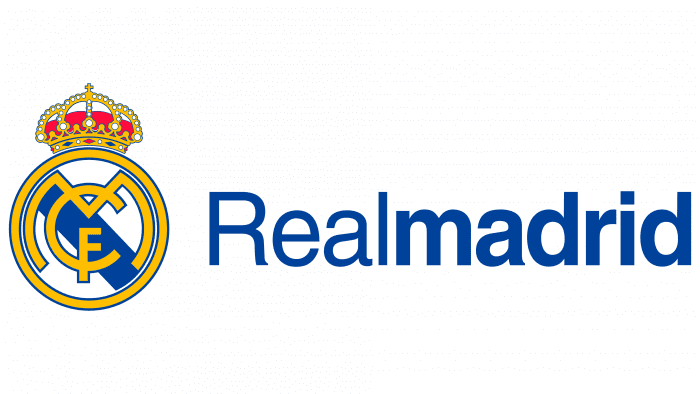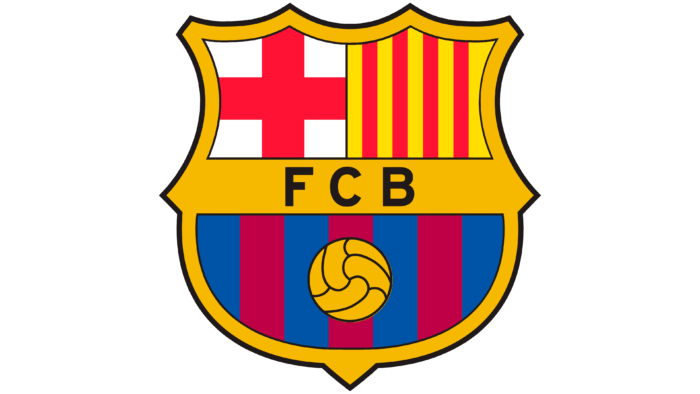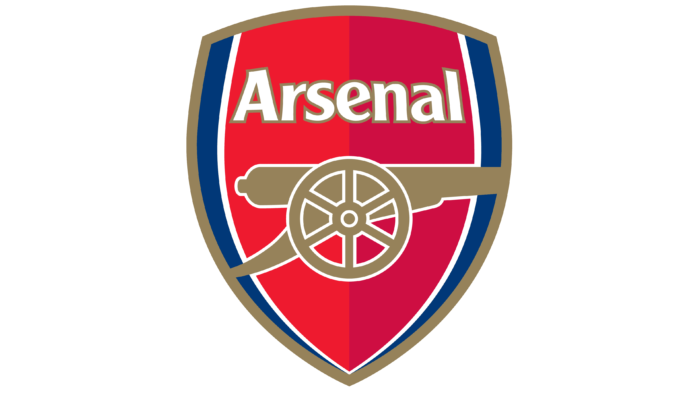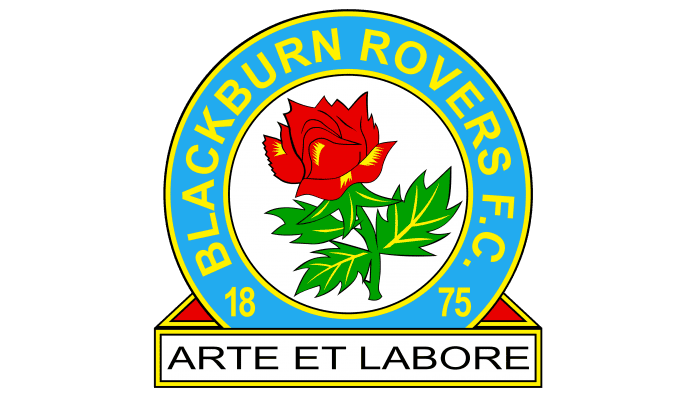The emblem of the Spanish football team, “Real Madrid,” is presented with bright and memorable graphics, reflecting the title and invincibility. It embodies a commitment to the city’s history, royal status, and the club’s status acquired over the last hundred years.
Real Madrid: Brand overview
Meaning and History
Some believe the famous crown on Real’s logo reflects its sports achievements. Indeed, the team’s reputation is defined by triumphant victories, as it established itself as a football superpower in the 1950s. The furor it caused is inscribed in the club’s DNA and expressed in a simple and confident emblem. However, Real Madrid’s branding style was more influenced by political factors, as its chronology dates back to the early 20th century.
Real’s first logo was a trivial mix of the club’s initials: blue letters M, C, and F were written on a white background. The team often performed under the city’s emblem, which was required by the rules of most football competitions at the beginning of the century. It is erroneous to attribute the history of “Madrid” to the city’s coat of arms, although the rules of official competitions at that time obliged the club to use the city’s emblem.
In 1908, the Real Madrid emblem changed. As a result, the city coat of arms became the progenitor of the club’s modern emblem. Initially (in 1908), the club’s initials were superimposed on the shield borrowed from the city, so the “Galacticos” logo acquired blue circles.
On June 29, 1920, the Spanish king Alfonso XIII conferred the royal title “Real” to Madrid. This event was reflected in the club’s emblem as a crown identical to the city’s coat of arms. In official matches, the team continued to perform under the stylized emblem of the city.
The revolution that overthrew King Alfonso XIII and marked the formation of the Second Spanish Republic led to the team being renamed “Madrid” Football Club again from 1931 to 1939. The emblem lost its crown due to the ban on using symbols of monarchical items. At the same time, the Real Madrid logo acquired a violet stripe, symbolizing the region of Castile, where modern Madrid is located.
At the end of the Civil War and the establishment of General Francisco Franco’s dictatorship, royal status returned to Madrid, and the crown was added to the Galacticos logo. The Real Madrid emblem was redesigned and became colorful with golden tones. The Castilian stripe was retained on the Real emblem.
The Real Madrid logo remained in this form for over five decades, undergoing minor changes at the turn of the century. At the beginning of the century, Madrid’s coat of arms took its final form. Before embarking on the construction of the “Galacticos,” the bosses of the Madrid club maximized the letter M. They made the stripe blue, eliminating the purple color.
Opening a new chapter in history, the Madrilenians refined the logo, which acquired a modern look, befitting the status of the best club of the twentieth century.
What is Real Madrid?
Real Madrid is a Spanish professional football team from Madrid that plays in the top division of La Liga. It is recognized as one of the most famous teams on the international stage and boasts a large number of awards. The majority of its victories were achieved in the 1950s and 1960s, establishing itself as the vanguard of European football. By 2021, it became the second largest in the world and, in 2022, the most valuable. The club was founded in 1902, and its home stadium is “Santiago Bernabeu.”
1902 – 1908
On March 6, 1902, several like-minded footballers founded the “Madrid” football club. Its predecessor is considered Football Sky, created in 1896. The first logo of the new sports organization was a dark blue monogram. Artists combined the initial letters from the name of the Spanish team Madrid Club de Futbol: “M,” “C,” and “F.” Initially, they were intertwined: inside the large “C” was a medium-sized “M,” merging with “F.” The monogram looked chaotic because the designers did not consider the harmony of shapes and proportions.
Along with the monogram, the coat of arms of the Madrid mayor’s office was used, as required by the football competitions of that time. However, the city’s symbol was not included in the official history of Real Madrid’s emblems, as it was common for all local clubs.
1908 – 1920
1908, the first changes occurred in the FC “Madrid” branding style. The team’s initials remained but acquired a new form. Developers significantly enlarged and rounded the letter “M.” On the other hand, the letter “C” became smaller and was placed in the center, between the side legs of “M.” The smallest letter – “F” – was positioned to intersect with the bottom edge of “C.”
Judging by the round blue frame in which the monogram was located, the city coat of arms became the progenitor of the logo. As far as is known, the football team’s initials were initially superimposed on a rectangular shield with a rounded base and dark blue edging. Then, the designers changed their shape, choosing a circle.
1920 – 1931
The second version of the logo was relevant until 1920, when Pedro Parages took the post of president. Then, a large blue-white monarchical crown first appeared on the drawing. This sign appeared because the football team received official approval from Alfonso XIII. In honor of the patronage of the royal court, the club changed its name to “Real Madrid”: the word “Real” translates as “Royal” and emphasizes the connection with the crowned person. In some matches, as before, the city coat of arms was used.
1931 – 1941
After King Alfonso XIII and the entire Spanish monarchy were overthrown, the emblem creators removed the crown, as the post-revolutionary government prohibited such symbols. At the same time, they left the blue ring, centered the letters, and placed a wide purple stripe inside the circle. The diagonal line symbolizes Castile, where modern Madrid is located.
1941 – 1997
The Civil War ended in 1941, and the club returned the crown to the emblem. Artists depicted it in a golden palette, with blue, red, and white precious stones. The ring and letters are golden. The Castilian stripe was preserved—it was slightly unfolded and made violet.
1997 – 2001
The 1997 version differs from the previous one only in the color scheme. Gold turned yellow, bright red to pale, and violet to dark blue.
2001 – today
The final version of the logo was presented in 2001. It has a wider letter “M,” a narrow and shortened diagonal stripe, and a crown slightly raised above the ring. The primary color is yellow; all elements are outlined in dark blue contours.
Real Madrid: Interesting Facts
Real Madrid C.F. is a world-famous soccer team. Founded in 1902, it has been involved in some major moments in soccer.
- Champions in Europe: They’ve won the UEFA Champions League, a huge European soccer tournament, 13 times. From 1956 to 1960, they won it five times in a row!
- Top Club of the 20th Century: In 2000, FIFA named them the Best Club of the 20th Century because they’ve been so good and important in soccer.
- Signing Big Stars: Real Madrid is known for buying famous players like Zinedine Zidane and David Beckham, making the team even more exciting.
- Winning in Spain: They’ve won La Liga, Spain’s top soccer league, many times. Their games against FC Barcelona, called El Clásico, are some of the most exciting matches you can watch.
- Their Stadium: They play in the Santiago Bernabéu Stadium in Madrid, one of the most famous stadiums. It’s been their home since 1947.
- Great Training: They have a super modern training facility called Ciudad Real Madrid. It’s where all their players practice and improve, from the new ones to the stars.
- Helping Others: Through the Real Madrid Foundation, they work on projects that help kids and young people worldwide, using soccer to teach important life skills.
- Unforgettable Games: They’ve had some amazing comebacks and victories, like their big win in the 2014 UEFA Champions League final.
- Legendary Players: Some of the best soccer players, like Cristiano Ronaldo and Iker Casillas, have played for Real Madrid.
- Training Young Players: Their youth academy, “La Fábrica,” has helped many young players become soccer stars.
Real Madrid isn’t just a soccer team; they’re a big part of soccer history. They’ve won a lot, helped grow the sport, and continue to be loved by fans everywhere.
Font and Colors
The current brand name corresponds to the status of the best club of the 20th century and is used to promote “Real Madrid” as a brand. It reflects all the symbols the team has acquired over the last hundred years: the crown granted by Alfonso XIII and the abbreviation “MCF,” formed from the first name Madrid Club de Futbol, and the Castilian stripe.
In creating the logo, designers disregarded existing fonts and used only their imagination to make the monogram unique. “C” looks standard, “F” has shortened horizontal strokes, and “M” is noticeably rounded. The palette contains red (#EE324E), blue (#00529F), and yellow (#FEBE10) colors.
